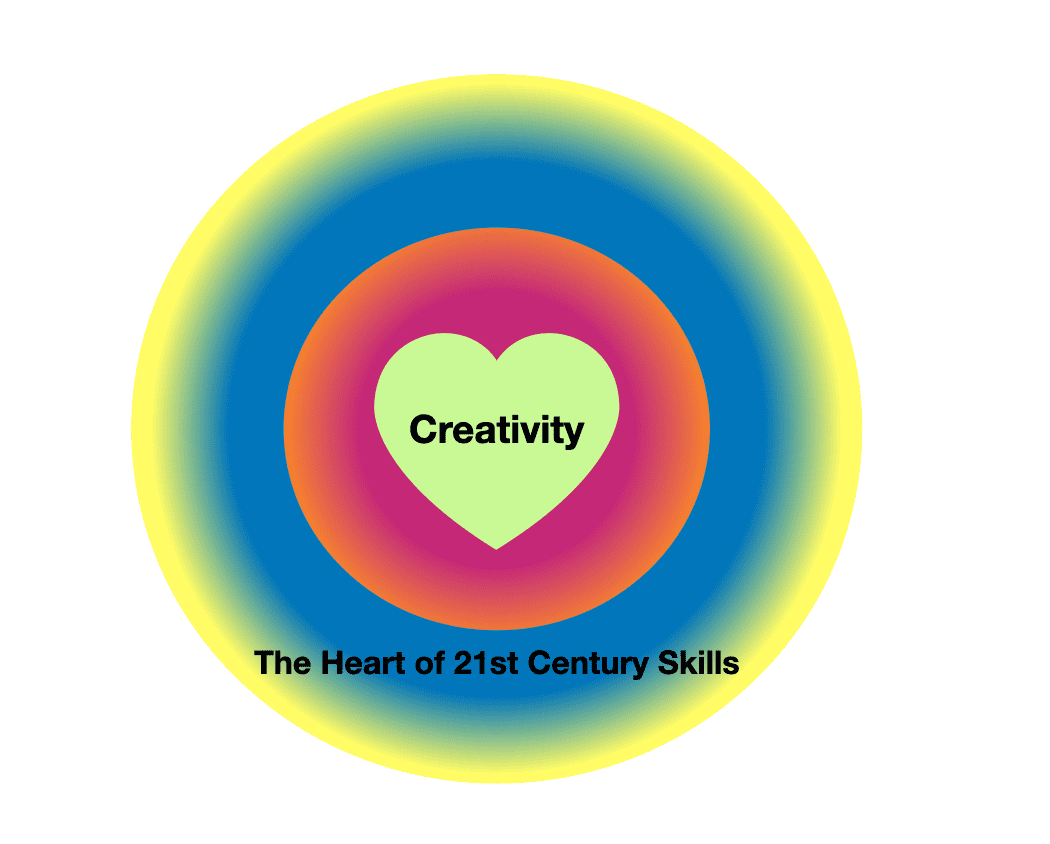Dr. Melissa M. Schmitz
International thinktanks outline requirements for success in the 21st-century. Creativity is central to the requirements for learning and future economic development. Yet, even now in 2022, organizations, both business and educational, struggle to support creativity. Why is this? The short answer, creativity is complex. The long answer, I will cover that; but first, the good news.

Thanks to neuroscientific techniques and educational research, a deeper understanding of creativity has emerged fueling skills and practices to support creative thinking. Central to this understanding is creative capacity. This means, everyone, on some level is creative, and creativity can be improved through training. While this is promising news, organizations continue to struggle to support and enhance creativity.
Why is developing an environment conducive to creativity so hard? Creativity requires more than just systemic change; it requires a paradigm shift. Realizing creativity education requires changing aspects of learning and work many assume to be unchangeable. In other words, realizing 21st-century creativity requires society to adopt broader beliefs about what education and work mean. The adoption of new beliefs is a paradigm shift.
What exactly is this new way of thinking about the 21st-century? In 2018, the World Academy of Art & Science (WAAS) outlined shifts to support a new educational paradigm. Jacobs and Zucconi (2018) noted eight key areas in the new educational paradigm, 1) from subject-centered to person centered, 2) from passive transfer to active learning, 3) from competitive individual to collaborative group learning, 4)from standardized competencies and conformity to customized, creative individuality, 5) from abstract knowledge to understanding and critical analysis, 6) from mechanistic, reductionist thinking to organic, integrated, interdisciplinary and transdisciplinary thinking, 7) from transfer of mental knowledge to development of the whole personality and 8) from fragmented and compartmentalized knowledge to contextual knowledge.
Although these shifts support creativity and while some organizations have implemented examples of each in modern work and education, the mechanisms of the old system continue to dominate. This disconnect creates decoupling between expectations and reality. On the one hand, organizations embrace the concept of 21st century workplaces; however, the day-to-day reality for workers and learners remains rooted in historical ideals. The result is education and business organization that recognize 21st century standards but do not realize the changes required for actual implementation. This decoupling of 21st-century practices from the modern workplace and education organizations is not malicious. On the contrary, most organizations are unaware of the practices that directly interfere with realizing successful implementation of 21st-century skill. What can an organization do to assess their level of 21st-centiury skill implementation? Ask a professional.
WISE HD is an educational company applying scientific research to advance 21st-century skills. WISE HD’s skilled consultants provide courses, coaching, and curriculum services for leaders, managers, educational administrators; and teachers of small, medium, and large-sized organizations. Through general discussions and training on the science of creativity, collaboration, and innovation, the company’s researched-based approach puts 21st-century skills in reach.
References
Jacobs, G. & Zucconi A. (2018). World academy of arts and science: Introductory report on the 2ndinternational conference on future education. Eruditio, 2(4). Retrieved from: http://eruditio.worldacademy.org/volume-2/issue-4/article/introductory-report-2nd-international-conference-future-education